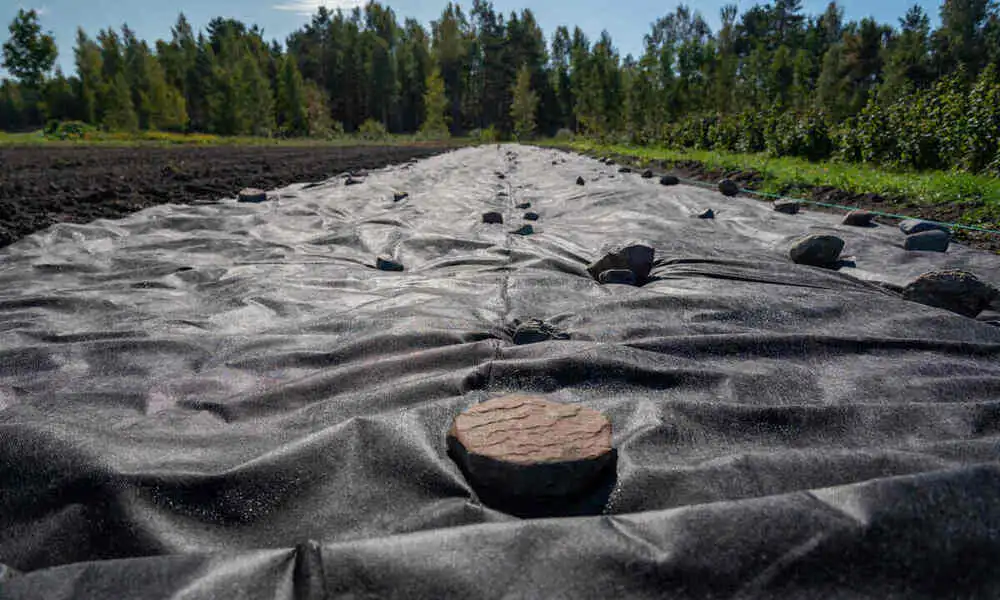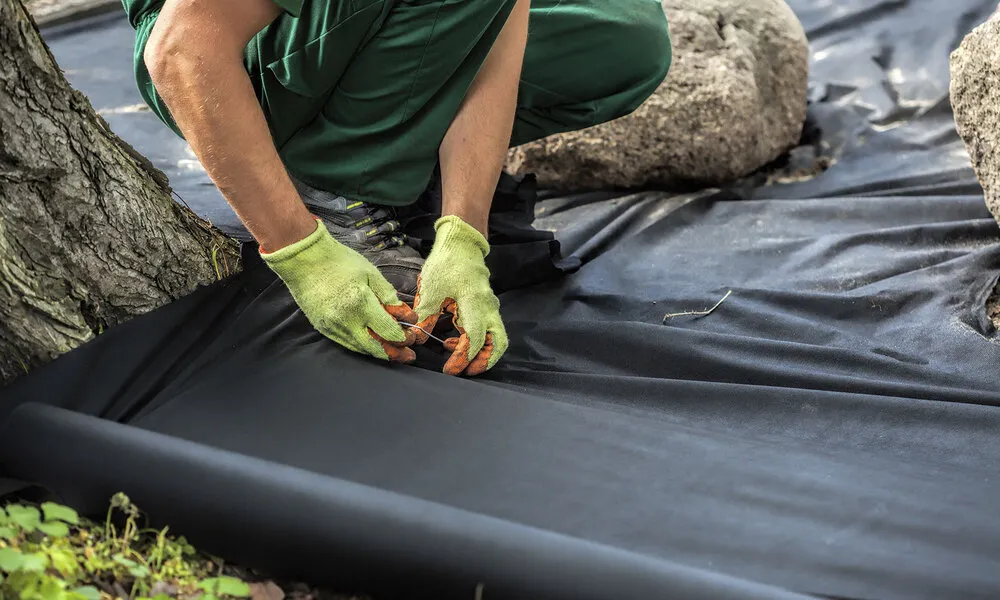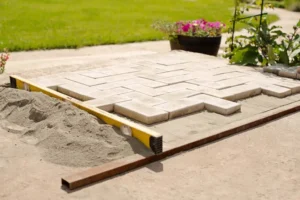Gardening is a worthwhile hobby; however, weeds can quickly destroy the splendor of your backyard. One of the only methods to lessen weed boom even as retaining your soil healthy is with the aid of using landscape fabric. Many owners are precisely a way to use landscape fabric and whether or not it actually helps. In this guide, we`ll cover the entirety you want to know from installing landscape fabric to its pros and cons so that you can preserve your lawn looking clean and low-maintenance.
What Is Landscape Fabric?

Landscape cloth is a woven or non-woven cloth that gardeners vicinity on the soil earlier than adding mulch, rocks, or gravel. Its predominant motive is to dam daylight and save you weeds from sprouting, even as nonetheless permits water and vitamins to reach the soil. The use of landscape fabric is famous in flower beds, vegetable gardens, walkways, and beneath ornamental stones.
Benefits of Using Landscape Fabric
Before studying a way how to use landscape fabric, it`s critical to understand why it`s really well worth considering:
Weed control – Stops weeds from developing with the aid of blocking daylight.
Moisture retention – Helps soil live hydrated longer.
Reduced maintenance – Less time spent weeding.
Soil erosion prevention – Keeps soil in the vicinity beneath mulch or rocks.
Improved lawn appearance – Creates a neat and polished look.
Tools and Materials You`ll Need
To begin laying landscape fabric, accumulate those supplies:
- Landscape cloth roll
- Scissors or application knife
- Garden staples or panorama pins
- Rake or shovel
- Mulch, rocks, or gravel (for masking the cloth)
Step by Step Guide | How to Use Landscape Fabric

Now, let`s stroll through the method of putting in landscape fabric in your backyard or lawn.
Step 1: Prepare the Soil
Clear the location where you intend the use landscape fabric. Remove weeds, grass, or antique mulch. Smooth the soil with a rake and make certain the floor is even.
Step 2: Cut and Lay the Fabric
Roll out the landscape fabric over the organized soil. For large areas, overlap cloth edges with the aid of using as a minimum of 6–eight inches so weeds can not sneak through. This ensures effective laying of landscape fabric with full coverage.
Step 3: Secure the Fabric
Use lawn staples or panorama pins to keep the cloth in place. Pin down the rims and middle to save you from shifting, mainly in windy areas.
Step 4: Cut Openings for Plants
If you’re planting flowers, shrubs, or vegetables, reduce an X-shaped beginning within the material where every plant will go. Gently fold the flaps, dig the hole, and region the plant.
Step 5: Cover with Mulch or Rocks
Finally, cover the material with 2–three inches of mulch, gravel, or ornamental rocks. This now no longer best improves the look but additionally protects the material from UV rays and extends its life.
Tips for Installing Landscape Fabric Correctly
- Always use high-quality, UV-resistant material for durability.
- Overlap seams to keep away from gaps wherein weeds can develop.
- Don`t skimp on staples—stable edges firmly.
- Replace mulch often to keep it fresh.
- Avoid overlaying material with too thick a layer of soil, as weeds can develop above it
Common Mistakes to Avoid When Laying Landscape Fabric
Many house owners make small errors that lessen the effectiveness of the use of landscape fabric. Avoid those pitfalls:
Not getting ready soil properly – Leaving weeds or roots beneath will cause destiny problems.
Forgetting drainage – If water can’t bypass through, plant life might also suffer.
Skipping plant holes – Cutting too small or too big openings influences plant growth.
Leaving material exposed – Without mulch or rocks, material will degrade speedy in sunlight.
Pros and Cons of Using Landscape Fabric
Like each gardening tool, the use of landscape fabric has its benefits and disadvantages.
Pros:
Long-term weed control
Reduces want for herbicides
Neater lawn look
Helps save you from soil erosion
Cons:
It can be hard to transport as soon as installed
Some fabrics might also additionally limition water and vitamins over time
Weeds might also develop on the pinnacle if mulch isn’t maintained
Best Places to Use Landscape Fabric
Flower beds – Keep beds tidy and weed-free.
Vegetable gardens – Reduce weeding workload.
Pathways and walkways – Prevents weed boom below stones or gravel.
Shrubs and trees – Help hold soil moisture around roots.
Alternatives to Landscape Fabric
If you’re uncertain approximately the use of landscape fabric, consider different weed management methods:
Organic mulch (wooden chips, straw, or bark
Cardboard or newspaper layers below mulch
Ground cowl vegetation that obviously suppresses weeds
These options are greener green however may also require greater common replacement.
Maintenance After Installing Landscape Fabric
Once you end laying landscape fabric, proper care will make it ultimate longer:
Inspect cloth yearly to test for tears or weed boom.
Refresh mulch or rocks each year.
Replace the cloth if it begins to go to pot after 5–10 years.
Final Thoughts
Learning how to use landscape fabric is crucial for any gardener who desires to keep their backyard neat and loose from weeds. By getting ready the soil, nicely laying landscape fabric, and covering it with mulch or rocks, you may experience lengthy-time period weed management and an advanced lawn appearance. While there are pros and cons, whilst used effectively, the use of landscape fabric saves time, reduces upkeep, and enables the creation of a more fit lawn.
Frequently Asked Questions (FAQs)
Is landscape fabric good for all forms of gardens?
Landscape fabric works exceptionally well for ornamental areas, pathways, and low-maintenance beds. For vegetable gardens, it may be useful; however, a few gardeners decide upon herbal mulches.
How long does landscape fabric last?
High-quality landscape fabric can ultimate 5–10 years if established effectively and protected with mulch or gravel.
Can weeds nevertheless develop through landscape fabric?
If established nicely with overlapping seams and mulch cover, only a few weeds will grow through. However, weeds can develop on top of mulch, so upkeep continues to be needed.
Should landscape fabric go below mulch?
Yes. Landscape cloth must constantly be located below mulch, gravel, or rocks to shield it from daylight and amplify its lifespan.
Is installing landscape fabric really worth it?
Yes, for maximum homeowners. It reduces weeds, saves time, and maintains gardens looking neat. However, you should set it up effectively for exceptional results.





